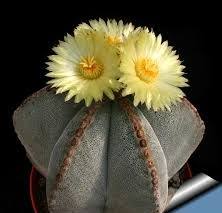Ariocarpus Cauliflower pack of 5 seeds
₹199.00
Out of stock
Email when stock available
Ariocarpus Cauliflower Description: Ariocarpus Cauliflower is one of the largest species that distinguishes for the Cauliflower like shapeand peculiar White flowers. It is quite variable in tubercle shape and size and has received numerous unnecessary names of no botanical value, representing no more than local phenotypes
Habit: Solitary rosette-forming, geophytic cactus rising slightly above ground level.
Stem: 5 to 30 cm in diameter, 4 to 25 cm tall, globose, more or less depressed, rounded on top, mostly yellowish-green.
Tubercles: Upright yellow/brownish grey, divergent, not closely set or basally compressed, acute at the apices, flattened and smooth adaxially, not fissured, strongly incurved, 3-8cm long, 1-2.5cm broad, usually twice as long as wide, but variable from long and thin to short and broad.
Areoles: Ariocarpus Cauliflower bears only small basal areoles, whose meristem do not divide, monomorphic. On the contrary Ariocarpus retusus has floral and spinous parts separate, dimorphic. However spine-bearing portions of the areoles are present at the tips of the tubercles of tubercles only in very small specimens.
Roots: Tap root.
Flowers: Cream-white to yellowish-white or yellow (occasionally with reddish mid-ribs) with a satin sheen, 3 to 5 cm in diameter up to 4 cm long.
Blooming season: They come in late autumn or early winter.
Fruit: Whitish or greenish, 7-20 mm long, 5-10 mm across.
Remarks: In the area of Aramberri Ariocarpus trigonus intergrades with Ariocarpus retusus giving rise to a an hybrid population known as Ariocarpus confusus
Propagation: It is probably the easiest species of the genus to raise from seed, but will generally take about 7-10 years to reach flowering size, occasionally grafted.
Be the first to review “Ariocarpus Cauliflower pack of 5 seeds” Cancel reply
You must be logged in to post a review.
Related products
cactus and succulent seeds
cactus and succulent seeds
cactus and succulent seeds
cactus and succulent seeds
Carnegiea gigantea (Saguaro) Seeds rare Cactus Seeds Pack of 20 seeds
cactus and succulent seeds












Reviews
There are no reviews yet.